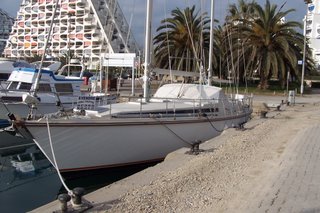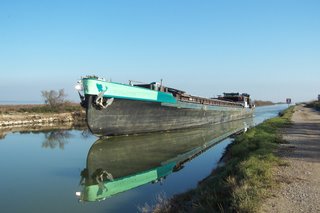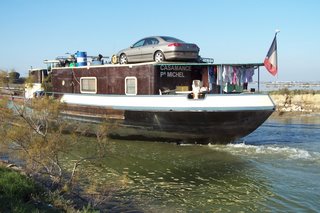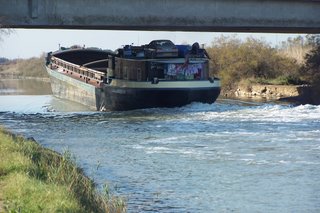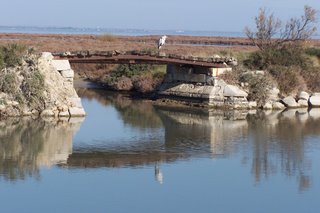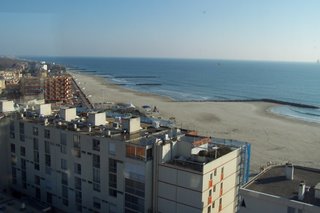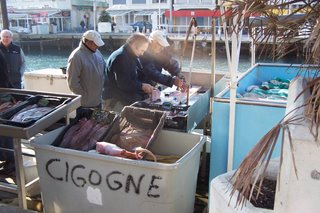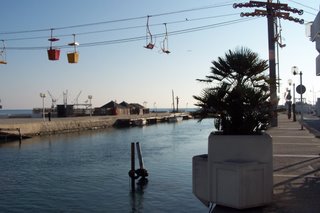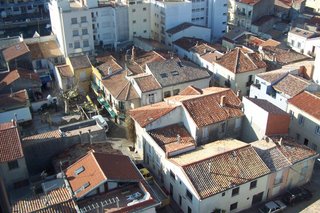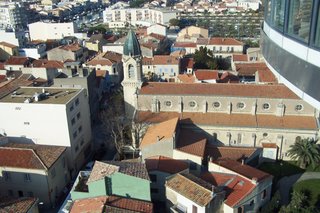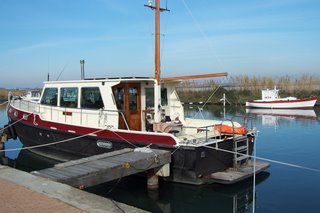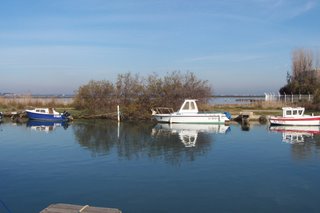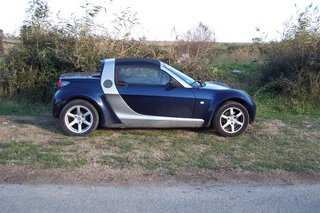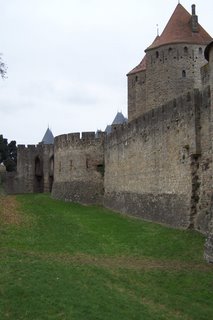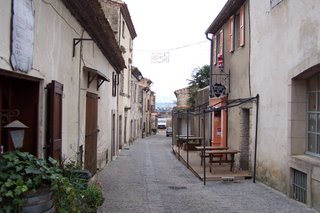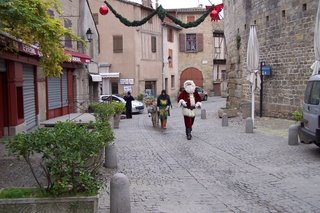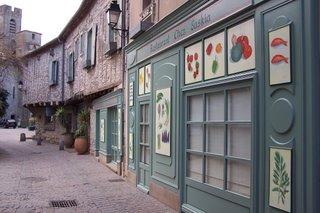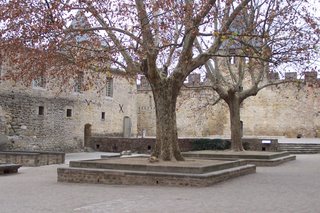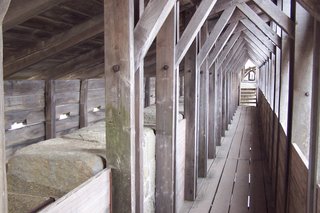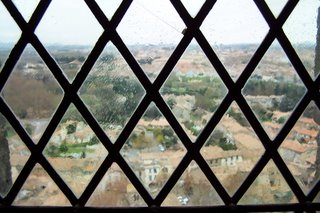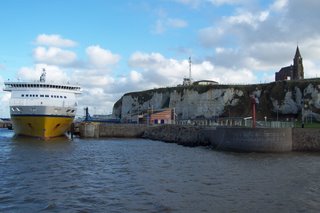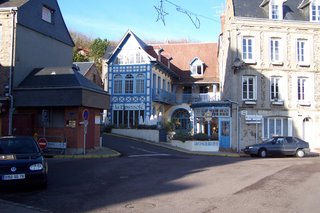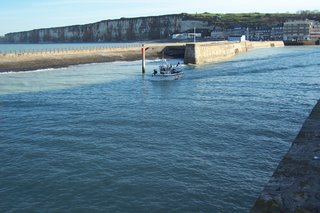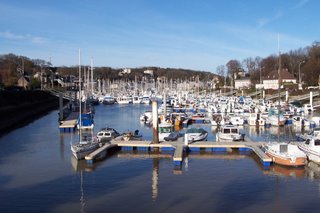La Grande Motte
28-29 December
If by now you are wondering whether France has built any towns or villages since the 12th century we will put your mind at ease with a visit to La Grande Motte.
We “discovered” the “Big Mound” during a 44 kilometre bicycle ride from Palavas-Les-Flots along the Sète to Rhone Canal to La Grande Motte and back. It is quite a contrast to be in a town that was conceived in 1965 and built over the next 15 years.
In 1962 then Président Charles de Gaulle decided to give a big push to the development of tourism in the Mediterranean region of France. Canadians “of a certain age” will remember “le grand Charles” as the only head of state ever to be expelled from Canada. It was, of course, M. de Gaulle who on the balcony of the Hôtel de Ville de Montréal declared in his pontificating manner “Vive Montréal! Vive le Québec! … Vive le Québec ---- libre!” In the height of separatiste challenges in Québec, Canada’s Prime Minister, Lester Pearson was not amused by the last of the three Vives, and made it clear that de Gaulle was no longer a welcome guest and le Président left.
Meanwhile the project to expand tourism progressed and the dredging and filling of lakes and canals moved ahead. The town actually sits on 5.7 million cubic meters of silt dredged from Lac Ponant. The architect who won the contract for the design of the town, Jean Balladur, decided on pyramids as the basic design theme partly to reflect the shape of waves, dunes and hills of the area and partly because of his interest in Mexico and its Aztec temples.
The town boasts 8000 permanent residents, thousands of summer visitors, 385 hectares of green space, more than 29,000 trees, 113 hectares of lawns and hedges, more than 20 kilometres of bike and pedestrian trails and a marina that can accommodate about 1400 boats. And it has an excellent Cyber Café – 10 Euros for 2 hours and a welcoming ambience.
The following pictures illustrate how different this town is, from others in our series.

We cheated a bit to get this aerial view - a brochure is always free here, whereas a helicopter cost some serious money. But this gives a good perspective of the overall design and layout of the town plan and its "pyramids".
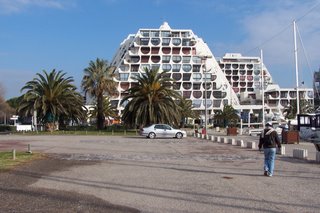
Notice how warm it is - Marie-Claire is out of her world famous yellow winter coat.
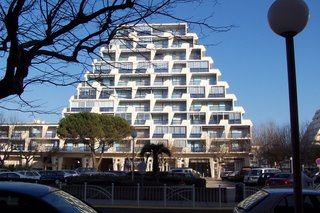

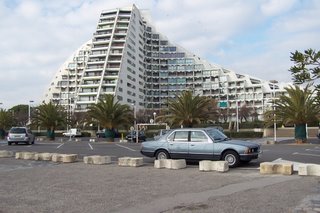
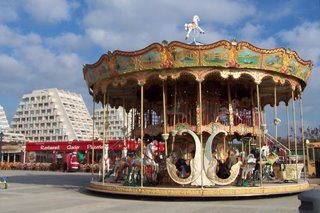
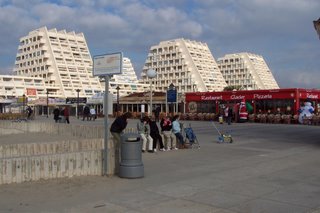
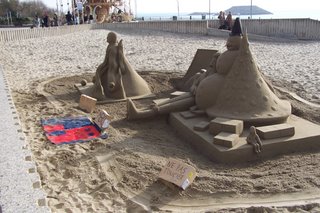
If by now you are wondering whether France has built any towns or villages since the 12th century we will put your mind at ease with a visit to La Grande Motte.
We “discovered” the “Big Mound” during a 44 kilometre bicycle ride from Palavas-Les-Flots along the Sète to Rhone Canal to La Grande Motte and back. It is quite a contrast to be in a town that was conceived in 1965 and built over the next 15 years.
In 1962 then Président Charles de Gaulle decided to give a big push to the development of tourism in the Mediterranean region of France. Canadians “of a certain age” will remember “le grand Charles” as the only head of state ever to be expelled from Canada. It was, of course, M. de Gaulle who on the balcony of the Hôtel de Ville de Montréal declared in his pontificating manner “Vive Montréal! Vive le Québec! … Vive le Québec ---- libre!” In the height of separatiste challenges in Québec, Canada’s Prime Minister, Lester Pearson was not amused by the last of the three Vives, and made it clear that de Gaulle was no longer a welcome guest and le Président left.
Meanwhile the project to expand tourism progressed and the dredging and filling of lakes and canals moved ahead. The town actually sits on 5.7 million cubic meters of silt dredged from Lac Ponant. The architect who won the contract for the design of the town, Jean Balladur, decided on pyramids as the basic design theme partly to reflect the shape of waves, dunes and hills of the area and partly because of his interest in Mexico and its Aztec temples.
The town boasts 8000 permanent residents, thousands of summer visitors, 385 hectares of green space, more than 29,000 trees, 113 hectares of lawns and hedges, more than 20 kilometres of bike and pedestrian trails and a marina that can accommodate about 1400 boats. And it has an excellent Cyber Café – 10 Euros for 2 hours and a welcoming ambience.
The following pictures illustrate how different this town is, from others in our series.

We cheated a bit to get this aerial view - a brochure is always free here, whereas a helicopter cost some serious money. But this gives a good perspective of the overall design and layout of the town plan and its "pyramids".

Notice how warm it is - Marie-Claire is out of her world famous yellow winter coat.






And finally to close ... no pressure Maria but hey Uve here's another Super Maramu for sale.


